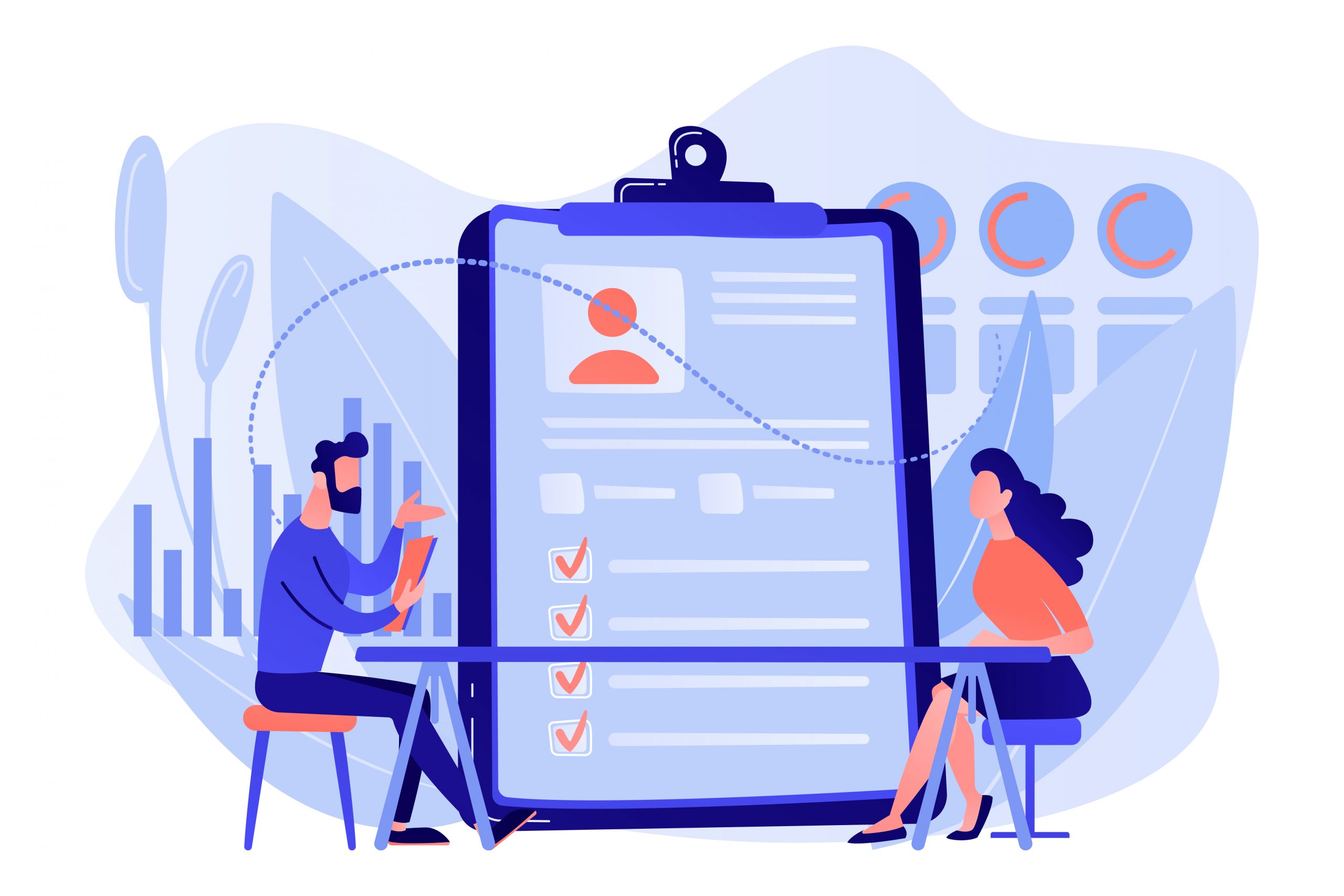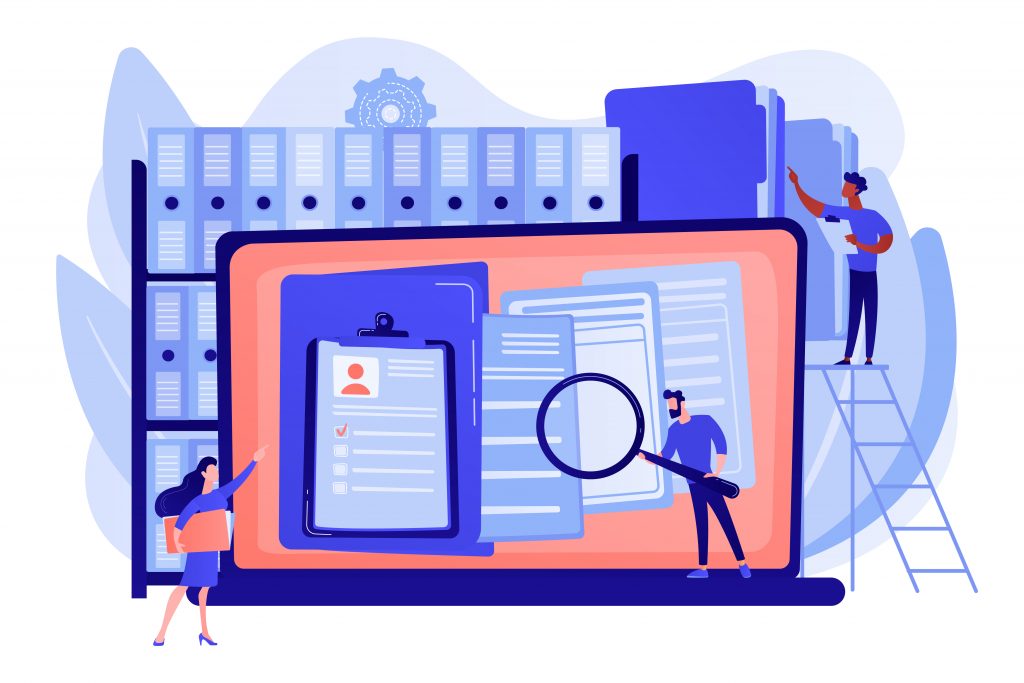
What to Include in a Resume
Crafting the perfect resume can be the difference between landing your dream job and getting lost in a sea of…
Crafting the perfect resume can be the difference between landing your dream job and getting lost in a sea of applications. Whether you’re wondering what to put on a resume with no experience or searching for the best skills to include in your professional profile, this comprehensive guide will help you create a standout resume that gets noticed. From essential resume parts like the summary section and work experience to often-overlooked elements such as additional information and awards, we’ll cover everything you need to know about what should be included in a resume. With today’s competitive job market, understanding what to put in your resume – and what to leave out – has never been more crucial. Ready to transform your resume from good to exceptional? Let’s dive into the key components that will make your resume shine and help you land more interviews.
What is a resume and why should we make one?
A resume is your professional story told through a carefully crafted document that showcases your skills, experience, and qualifications to potential employers. This essential career tool serves as your first impression in the job market, acting as a personal marketing piece that highlights why you’re the ideal candidate for a position.
Why create a resume? Simply put, it’s your ticket to job opportunities. A well-crafted resume opens doors to job interviews and presents your professional achievements and capabilities in a way that helps employers quickly evaluate your fit for a role. It sets you apart from other candidates while demonstrating your communication skills and tracking your career growth. Beyond just listing your experience, a strong resume serves as a powerful tool for salary negotiations and professional advancement in today’s competitive job market. Whether you’re a fresh graduate, changing careers, or climbing the corporate ladder, a compelling resume is your key to unlocking new professional opportunities.
Resume Requirements
Creating an effective resume requires attention to several key requirements that help ensure your document meets professional standards and employer expectations. Every resume should be concise, typically one to two pages long, and formatted with clear, easy-to-read fonts like Arial or Times New Roman in 10-12 point size. The document must maintain consistent formatting throughout, including uniform spacing, bullet points, and margins of approximately one inch on all sides. Proper organization is crucial, with information presented in reverse chronological order to highlight your most recent experiences first. Your resume should be tailored to each specific job application, incorporating relevant keywords from the job description while remaining honest and accurate in representing your qualifications. It’s essential to proofread thoroughly for any grammatical errors or typos, as these can immediately disqualify you from consideration. Additionally, your resume should be saved in a professional format, typically as a PDF, to ensure it maintains its formatting across different devices and platforms.
Parts of a Resume
- Personal Information
Your personal information section serves as your professional identity card. It should include your full name prominently displayed, current professional email address, reliable phone number, and general location (city and state). For privacy reasons, avoid including your full street address. If relevant to your job search, add your LinkedIn profile URL or professional portfolio website. This section must be error-free and up-to-date, as employers will use this information to contact you for interviews.
- Objective/Goal
The objective or professional summary section is your elevator pitch that immediately captures the recruiter’s attention. Here, briefly outline your career goals and what you bring to the position. This section should be customized for each job application, highlighting how your skills and experience align with the specific role. Keep it concise but impactful, focusing on what you can offer the employer rather than what you want from them.
- Work Experience
This crucial section details your professional journey in reverse chronological order. For each position, include the company name, your title, employment dates, and key achievements rather than just duties. Use strong action verbs and specific metrics to demonstrate your impact. Focus on relevant experiences that showcase your qualifications for the target role. Include volunteer work or internships if they demonstrate valuable skills, especially for entry-level positions.
- Education
The education section highlights your academic achievements, including degrees, certifications, and relevant coursework. List your highest degree first, including the institution name, graduation date, and major/minor. Include your GPA if it’s above 3.5 and you’re a recent graduate. Mention academic honors, relevant projects, or research work. For seasoned professionals, keep this section brief unless the position specifically requires educational credentials.
- Professional Skills
Your skills section should be a strategic mix of hard and soft skills relevant to your target role. Include technical skills, language proficiencies, and industry-specific software knowledge. Organize skills by category for easy scanning, and prioritize those mentioned in the job description. Be honest about your proficiency level, as you may be tested on these skills during interviews. Keep this section updated with newly acquired skills and remove outdated ones.
- Additional Information
This final section adds depth to your professional profile by including relevant achievements outside your main experience. Include professional certifications, industry awards, publications, conference presentations, or language skills. You might also mention relevant hobbies or volunteer work that demonstrates valuable soft skills. Keep this section focused on information that adds value to your application and supports your candidacy for the specific role.
The 4 Keys of a Resume
Objective Your professional mission statement that clearly communicates career goals and value proposition to employers. It should be tailored to each position, highlighting how your aspirations align with the company’s needs and culture.
Experience A chronological showcase of your professional journey, highlighting key achievements and responsibilities. This section demonstrates your practical expertise through specific examples, metrics, and results that prove your capability to deliver value.
Qualifications Your educational background, certifications, and formal training that validate your expertise. This section establishes credibility through academic achievements, professional development, and industry-recognized credentials that match job requirements.
Skills A comprehensive list of your technical and soft skills that directly relate to the position. This section showcases your practical abilities, from industry-specific technical competencies to universal professional qualities that make you an effective employee.

Skills to Put on a Resume
- Critical Thinking
Modern workplaces demand professionals who can analyze situations from multiple angles and make data-driven decisions. This skill encompasses problem decomposition, logical analysis, pattern recognition, and solution evaluation. In practice, critical thinking means being able to identify root causes of problems, evaluate potential solutions based on multiple criteria, and implement strategic improvements that align with business objectives.
- Leadership
Beyond traditional team management, today’s leadership skills include virtual team coordination, cross-cultural communication, and adaptive management styles. Effective leaders must balance strategic vision with tactical execution, foster inclusive environments, and drive innovation while maintaining team stability. This includes crisis management, change leadership, and the ability to develop other leaders within the organization.
- Communication
Modern business communication goes far beyond basic speaking and writing. It includes digital communication proficiency, cross-cultural awareness, and the ability to translate complex technical concepts for different audiences. This skill encompasses virtual meeting facilitation, conflict resolution through various channels, and the ability to maintain clear communication across remote and hybrid teams.
- Time Management
In today’s fast-paced business environment, time management involves not just personal productivity but also the ability to coordinate across time zones and manage asynchronous work effectively. This includes proficiency in digital productivity tools, the ability to prioritize competing demands, and skills in managing both short-term deadlines and long-term strategic initiatives.
- Data Analysis
Modern data analysis encompasses more than just number crunching. It includes data visualization, predictive analytics, and the ability to translate data insights into actionable business recommendations. This skill requires proficiency in various analytical tools, understanding of data privacy regulations, and the ability to communicate findings to non-technical stakeholders.
- Technical Skills
Today’s technical skills extend beyond basic software proficiency to include automation tools, cloud platforms, and emerging technologies. This might include experience with AI tools, workflow automation, collaborative platforms, and industry-specific software. The key is demonstrating both current technical proficiency and the ability to adapt to new technologies quickly.
- Project Management
Contemporary project management includes agile methodologies, virtual team coordination, and risk management in a global context. This skill involves stakeholder management, budget oversight, resource allocation, and the ability to adapt project plans to changing business conditions while maintaining team motivation and project momentum.
- Teamwork
Modern teamwork extends beyond traditional collaboration to include virtual team dynamics, cross-functional project coordination, and international team management. This involves cultural intelligence, remote collaboration tools mastery, and the ability to build trust and rapport in digital environments. Success in teamwork now means being able to contribute effectively across different time zones, cultures, and work styles while maintaining productivity and team cohesion.
- Customer Service
Today’s customer service encompasses omnichannel support, predictive problem-solving, and experience management across digital and traditional platforms. This skill includes emotional intelligence, cultural sensitivity, and the ability to turn negative experiences into positive outcomes. Modern customer service professionals must excel at digital communication, social media management, and using CRM systems to track and improve customer interactions.
- Public Speaking
Contemporary public speaking skills now include virtual presentation mastery, webinar facilitation, and multimedia content delivery. This encompasses audience engagement in hybrid environments, technical presentation skills, and the ability to maintain professional presence across various digital platforms. Success requires mastery of virtual presentation tools, audience interaction techniques, and adaptive communication strategies.
- Interpersonal Skills
Modern interpersonal skills include virtual relationship building, cross-cultural communication, and digital emotional intelligence. This encompasses the ability to read non-verbal cues in virtual settings, manage remote team dynamics, and build trust through digital channels. Success requires understanding of different communication styles, conflict resolution in virtual environments, and ability to maintain professional relationships across digital platforms.
- Creativity
Modern creativity involves innovation within digital constraints, remote brainstorming facilitation, and the ability to generate solutions using emerging technologies. This includes design thinking, agile innovation processes, and the ability to adapt creative solutions to changing market conditions. Success requires balancing creative vision with practical implementation and measuring creative impact on business outcomes.
- Marketing
Contemporary marketing skills encompass digital strategy, data-driven campaign management, and omnichannel content creation. This includes social media expertise, marketing automation, and the ability to analyze marketing metrics for continuous improvement. Modern marketers must understand SEO, content marketing, and marketing analytics while staying current with emerging platforms and technologies.
- Writing
Professional writing now includes digital content creation, SEO optimization, and multi-platform content adaptation. This encompasses technical writing, UX writing, and the ability to create engaging content for various digital channels. Success requires understanding of different content formats, writing for AI readiness, and ability to maintain consistent brand voice across platforms.
- Research
Modern research skills include digital data collection, AI-assisted analysis, and the ability to synthesize information from multiple sources. This encompasses understanding of research methodologies, data validation techniques, and the ability to present findings through data visualization. Success requires proficiency in research tools, understanding of data privacy regulations, and ability to translate research into actionable insights.
- Organization
Today’s organizational skills include digital file management, virtual workspace organization, and cross-platform project coordination. This encompasses proficiency in productivity tools, ability to create efficient workflows, and maintenance of digital documentation systems. Success requires understanding of different organizational methodologies and ability to adapt systems for various team needs.
- Attention to Detail
Modern detail orientation includes process automation validation, quality assurance in digital environments, and systematic error prevention. This encompasses understanding of quality control systems, compliance requirements, and ability to maintain accuracy across multiple platforms. Success requires development of systematic checking procedures and ability to implement quality control measures in virtual environments.
- Adaptability
In today’s rapidly evolving business landscape, adaptability has become a cornerstone skill that encompasses technological flexibility, cultural agility, and resilience in facing change. This includes the ability to quickly master new software platforms, adapt to shifting work models (remote/hybrid/in-person), and maintain productivity during organizational changes. Modern adaptability also involves crisis management capabilities, the ability to pivot strategies based on market changes, and maintaining emotional stability during uncertain times. Successful professionals demonstrate this through continuous learning, embracing new methodologies, and showing flexibility in role responsibilities.
- Sales
Modern sales skills have evolved far beyond traditional face-to-face techniques to include digital sales mastery, social selling, and data-driven sales strategies. This encompasses virtual relationship building, CRM system expertise, and the ability to leverage analytics for sales optimization. Today’s sales professionals must excel at video conferencing presentations, digital networking, and using sales automation tools. The skill set includes understanding of buyer psychology in digital environments, mastery of virtual negotiation techniques, and ability to create compelling sales narratives across multiple platforms.
- Presentation Skills
Contemporary presentation skills combine traditional public speaking with digital delivery expertise and multimedia content creation. This includes mastery of virtual presentation platforms, ability to engage remote audiences, and skills in creating interactive presentation experiences. Modern presenters must understand audience engagement analytics, master screen sharing and virtual whiteboarding, and effectively use visual aids in both virtual and in-person settings. Success requires knowledge of presentation design principles, ability to adapt content for different platforms, and skills in managing technical aspects of digital presentations.
Tips for creating your resume
Crafting an effective resume requires careful attention to detail and strategic thinking. Here are essential tips to help you create a resume that stands out and captures potential employers’ attention.
Start with a strong foundation by choosing a clean, professional format that is easy to read and ATS (Applicant Tracking System) friendly. Stick to traditional fonts like Arial, Calibri, or Times New Roman in 10-12 point size, and maintain consistent formatting throughout the document. Use clear section headings and adequate white space to improve readability.
Customize your resume for each position you apply for. This means carefully analyzing the job description and incorporating relevant keywords and phrases that match the employer’s requirements. Focus on including skills and experiences that directly relate to the role, and remove irrelevant information that doesn’t add value to your application.
Quantify your achievements whenever possible. Instead of simply listing job duties, showcase your accomplishments using specific numbers, percentages, and metrics. For example, “Increased sales by 45%” or “Managed a team of 12 professionals” provides concrete evidence of your capabilities and impact.
Keep your content concise and impactful. Use strong action verbs to begin bullet points and focus on results rather than responsibilities. Limit your resume to 1-2 pages, ensuring every piece of information serves a purpose in marketing your qualifications for the specific role.
Proofread meticulously for errors in grammar, spelling, and formatting. Even minor mistakes can create a negative impression. Consider having a trusted colleague or professional mentor review your resume for feedback and suggestions for improvement.
Include a professional email address and ensure all contact information is current and accurate. If you maintain a LinkedIn profile or professional portfolio, include links only if they’re up-to-date and enhance your application.
Finally, save your resume in both PDF and Word formats, using a clear naming convention that includes your name. This ensures your document maintains its formatting across different devices and makes it easy for recruiters to identify and access your application materials.
Remember, your resume is often your first opportunity to make an impression on potential employers. Taking the time to craft a well-organized, professional, and targeted document can significantly increase your chances of landing interviews and ultimately securing your desired position.
Requirements for creating a resume in English – the Rule of 3 C’s
When crafting a resume in English, following the Rule of 3 C’s – Clear, Concise, and Consistent – is essential for making a strong impression on international employers.
- Clear: Use simple, straightforward English without complex jargon or regional expressions. Opt for active voice and strong action verbs to describe your experiences. Ensure your formatting is clean and easy to read, with clear section headings and adequate spacing.
- Concise: Keep your content brief but impactful. Each bullet point should convey specific achievements or responsibilities in no more than two lines. Focus on relevant information that directly relates to the position you’re applying for, avoiding unnecessary details or lengthy explanations.
- Consistent: Maintain uniform formatting throughout your resume, including font style, size, and spacing. Use the same tense when describing past experiences and keep your punctuation style consistent. Ensure you’re using standard American or British English spelling conventions throughout, not mixing both.
Before you write your resume
Success in job hunting begins long before you write your first resume word. The key is thorough preparation and understanding of the position you’re targeting. Start by conducting an in-depth analysis of the job posting, paying particular attention to both explicit requirements and subtle clues about the company’s needs.
Begin with a careful review of required qualifications, including education level, years of experience, and specific technical skills. Note any mandatory certifications or clearances. Then, analyze the role’s responsibilities and day-to-day duties, highlighting keywords and recurring themes that indicate the position’s primary focus.
Research the company culture and values through their website, social media presence, and employee reviews. This information helps you align your resume’s tone and content with the organization’s expectations. Additionally, identify the application process requirements, including any assessment tests, portfolio submissions, or specific formatting guidelines.
This preliminary work ensures your resume targets not just the job requirements but also addresses the company’s broader needs and culture, significantly increasing your chances of standing out among other candidates.
What not to put on a resume
In today’s competitive job market, knowing what to exclude from your resume is just as crucial as knowing what to include. A professional resume should be streamlined, focused, and free from unnecessary or potentially compromising information that could hinder your job prospects.
First and foremost, never include sensitive personal information such as your Social Security number, marital status, age, religious beliefs, or political affiliations. These details are not only irrelevant to your professional qualifications but could also lead to unintended bias or privacy concerns. Similarly, avoid including photographs unless specifically requested, as this practice varies by country and industry.
Keep your contact information professional and minimal. Use one reliable phone number and a professional email address, avoiding multiple contact points that might create confusion. Skip personal social media links unless they directly showcase relevant professional work, such as a LinkedIn profile or portfolio website for creative positions.
Outdated or irrelevant information can clutter your resume. Remove references to obsolete technologies, ancient work experiences, or unrelated hobbies. Also, avoid including salary information or reasons for leaving previous positions – these topics are better discussed during interviews.
Resist the urge to include references on your resume. Instead, prepare a separate reference list to provide when requested. Similarly, don’t include obvious statements like “References available upon request” – this is understood and wastes valuable space.
Remember, professional discretion is key. Never share confidential information from previous employers, such as proprietary data, client lists, or internal metrics that aren’t public knowledge. Also, avoid using jargon or acronyms that might not be universally understood in your industry.
By carefully curating what you exclude from your resume, you create a more powerful, focused document that emphasizes your relevant qualifications and professionalism while protecting your privacy and maintaining appropriate boundaries in your job search.
Conclusion
Your resume is more than just a document – it’s your personal marketing tool that can open doors to exciting career opportunities. With the right approach to crafting your resume, highlighting your achievements, and showcasing your skills, you can significantly increase your chances of landing your dream job.
At recruiting.by, we understand that creating a compelling resume can be challenging. That’s why our team of experienced HR professionals is here to help you craft a resume that stands out. We offer personalized resume writing services, tailored to your industry and career goals. Our experts can help you highlight your strengths, organize your experience effectively, and ensure your resume meets current industry standards.
Don’t let an imperfect resume hold you back from your career aspirations. Contact recruiting.by today, and let us help you create a professional resume that gets results. Together, we can transform your professional experience into a powerful tool for career advancement.
Our Blog
The latest news in our blog
Brief Overview of Labor Legislation in Belarus
Belarus remains an attractive point on the map for international IT companies due to its strong engineering school, competitive hiring…
How EOR Simplifies Payroll and Tax Management in Belarus
Belarus remains one of the most attractive markets in Eastern Europe for hiring IT and digital professionals. Companies from the…
Hi-Tech Park in Belarus
The Hi-Tech Park (HTP) is a special legal regime for IT business in Belarus that unites technology companies, startups, and…
Contact
We’re available for the new projects



